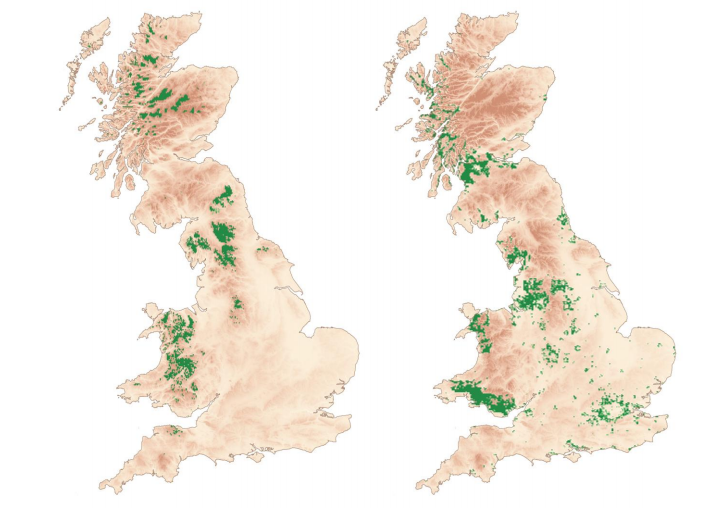Valuing our natural capital: Natural Capital Committee pushes for long-term thinking
Established in 2012 as a result of the 2011 Natural Environment White Paper (NEWP), the Natural Capital Committee (NCC) provides expert, independent advice to Government on the state of England’s natural capital. Their second annual report – The State of Natural Capital: Restoring our Natural Assets – was released on Tuesday. This focuses on what has been achieved so far and provides ambitious long-term goals for Government in relation to our natural capital.
The Committee’s first report in 2013 – The State of Natural Capital: Towards a framework for measurement and valuation – set out a framework to better measure and account for changes in natural capital accounts and feed these in to decision making processes. Their second report goes beyond this, giving an introductory analysis of the state of natural capital in England, risks facing these assets, and giving specific recommendations for Government. The long-term aim of Government to be ‘the first generation to improve our natural environment’ is a clear focus for the Committee, who has set out the need for a 25 year landscape-scale plan to deliver on this objective.
Three key messages come from the report:
- Some assets are currently not being used sustainably. The benefits we derive from them are at risk, which has significant economic implications;
- There are substantial economic benefits to be gained from maintaining and improving natural assets. The benefits will be maximised if their full value is incorporated into decision-making; and,
- A long-term plan is necessary to maintain and improve natural capital, thereby delivering wellbeing and economic growth.
Natural capital is a broad concept, and to be able to give a first insight into the state of natural capital in England, it must be clearly defined. The Committee are working on the notion that natural capital represents:
“the elements of nature that directly or indirectly produce value to people, including ecosystems, species, freshwater, land, minerals, the air and oceans, as well as natural processes and functions”.
Their preliminary analysis of the state of natural capital highlights several problematic trends that will affect the assets we derive from natural capital and the generally poor state of natural capital. The Committee’s initial look at drivers shows both numbers of invasive species and their abundance are increasing. The analysis shows that data for the majority of assets is significantly lacking, and further work is needed to ensure that all assets can be assessed.
Combined with accelerating external pressures such as climate change, the Committee highlights that the poor state of natural capital may lead to some of the benefits we derive from natural capital being at risk. The most significant goods at risk are clean water from mountains, moors and heaths, and wildlife across a number of land use categories – particularly farmland.
In both cases above, it is the quality of the habitat that is having an effect on the good provided. The state of natural assets doesn’t just depend on quality, however. Quantity and the location of the asset are also key features that must be assessed. This is highlighted in a case study in the report, which examines the costs and benefits of planting new woodland across the UK. The differences between planting locations based on market values alone, or both market and non-market values, such as recreation, are clearly displayed in the figure below:
From The State of Natural Capital: Restoring our Natural Assets
The left hand side shows woodland planting that maximises market values such as timber outputs. Planting is isolated away from population centres, and is focused on upland areas. There is a large shift in location for planting that accounts for non-market goods, however (right hand side). Allowing for the value of recreation, woodland planting would be more focused around inhabited areas to give maximum benefits to both timber output and communities. The overall social value of planting in upland areas is -£66 million per year, whereas it is £546 million per year when near communities.
The Committee’s call for a 25 year plan highlights the need for a new approach to managing natural capital in England. Given the declines seen in both the quality and quantity of habitats, and the goods that result from them, current management strategies are clearly not working effectively. To deliver the Government’s aim from the NEWP, there must be close working with the Committee to formulate a plan and then act to deliver it. The Committee highlights that any plan must be integrated with all other projects that have impacts on the environment, namely the Government’s infrastructure plan.
The Committee has highlighted the importance of natural capital for our economy. In addition to understanding the value of these assets, Government need to work to ensure that they are used sustainably to continue to benefit from the goods and services that are naturally available. The Committee has provided the basis of a long-term plan in order to achieve this, and can provide expertise to help drive this forward. All that is needed now is for the Government to follow through with their commitments from the NEWP.
Like what we stand for?
Support our mission and help develop the next generation of ecologists by donating to the British Ecological Society.
